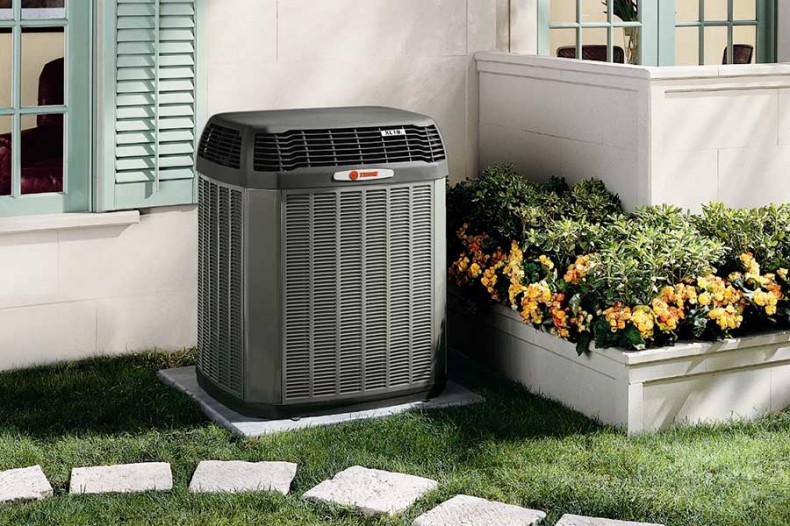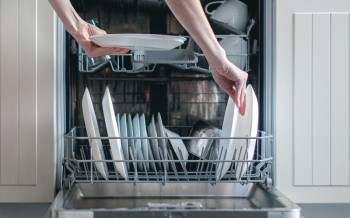Get Cool
How to buy a new air‑conditioning system
There are a handful of moments in life when you have an opportunity to select a new air conditioner. It can be an exciting and planned occasion of building a new home or addition. Usually it is an abrupt need to replace an existing unit. In either scenario, knowing about energy-efficient air conditioning options can help you select a unit that provides long-term comfort and affordability. When buying a new car, miles per gallon is a consideration in the long-term affordability of the vehicle. When investing in energy efficiency for an air conditioner or heat pump, choosing wisely is equally important.
Benefits
Energy Star-certified air conditioners exceed federal standards by at least 10 percent and meet stringent quality standards that yield long-term durability and exceptional performance. Many Energy Star-certified air conditioners and heat pumps exceed minimum Energy Star standards and are often worth the extra investment in our humid climate, especially if you have a lot of space conditioning in your home.
Measuring efficiency
Central air conditioners and heat pumps are rated according to Seasonal Energy Efficiency Ratio (SEER: cooling output divided by the power input for a hypothetical average U.S. climate) and Energy Efficiency Ratio (EER: cooling output divided by power consumption). Room air conditioners are rated according to Combined Energy Efficiency Ratio (CEER). The higher the SEER, EER or CEER, the more efficient the air conditioner.
Selecting a contractor
- Find contractors who employ technicians with North American Technician Excellence (NATE) training. Listings are found at hvacradvice.com or (877) 420-NATE. Ask for pricing from three mechanical contractors to weigh your options and contact several of the contractor's references to make sure that customers were satisfied.
- Energy modeling software must be used by the contractor to determine proper sizing before making a recommendation. Remember that bigger isn't always better, because an oversized system may not adequately dehumidify your home in our muggy climate. For example, just because you have an existing three-ton unit now does not mean that three tons is the correct replacement size. Always have the contractor confirm the HVAC size with modeling software.
- Have the contractor check all ducts before installing a new system. All ducts must be correctly sealed, insulated and sized with supply and return systems balanced.
- Inquire about a variable speed air handler that will improve comfort and efficiency and allow continuous air filtering at minimum energy cost.
- Ensure that your new HVAC system performs at its rated efficiency by replacing the outdoor compressor and air handler at the same time. If you purchase a new energy-efficient air conditioner but connect it to an older furnace and blower motor, your system will not perform to its rated efficiency.
- Contact your electric cooperative to inquire about rebates or low-interest loans for high efficiency equipment (not offered by all cooperatives).
Types of systems
| Market Range Available | Minimum | Lifespan* | |
|---|---|---|---|
| Central AC | 14–23 SEER | 15 SEER | 12–15 Years |
| Heat Pump, Ducted Air Source | 14–20 SEER | 15 SEER | 12–15 Years |
| Heat Pump, Ductless Air Source | 14–26 SEER | 15 SEER | 12–15 Years |
| Heat Pump, Ground | 8.7–45 EER | 14.1–21.1 EER | 20–25 Years |
| Room | 8.7–12.1+ CEER | 9.9 to 12.1 CEER | 10–15 Years |
*Consult with your HVAC contractor.
Measuring savings
An Energy Star-certified heat pump may cost $500 more than a non-certified model, however the savings on your electricity costs from an Energy Star model could be nearly $100 per year. If the unit lasts at least 10 years, the savings could be up to $1,000 — which will more than pay for the additional upfront cost. As energy prices continue to rise in the coming years, you'll have more peace of mind with an energy-efficient air conditioner or heat pump.
Use the Energy Star Savings Calculator to determine what you could save by investing in a more efficient central air conditioner.
CentralAC_Calculator.xls or RoomAC_Calculator.xls
First, collect the following information from your contractor:
| Contractor: ________________ | Energy Star Qualified Unit Option 1 | Energy Star Qualified Unit Option 2 | Conventional Unit |
|---|---|---|---|
| Estimated retail price with installation | $ | $ | $ |
| Efficiency | SEER | SEER | 14 SEER |
| Capacity (Btu/hr) | ton | ton | ton |
Energy saving tips
- Install and set a programmable thermostat.
- Keep the air conditioner fan set to "Auto" rather than "On" so it only runs when necessary.
- Change or clean the air filter every one to three months, including room air conditioners.
- Ensure a long equipment lifespan by having the air-conditioning system serviced annually.
- Use a room fan but remember they cool people — they don't actually reduce room temperature — so turn it off when you leave the room. When purchasing fans, look for Energy Star qualified fans.
- Use the bathroom fan when bathing and a vented range hood when cooking to remove heat and moisture from your home.
- Replace old or remove inefficient or extra appliances that generate excess heat such as refrigerators or freezers. Avoid using heat generating appliances such as the dryer or oven on hot days.
- Hire a home performance contractor to assess and improve your home so your home uses less energy for heating and cooling. If you don't already have recommendations from friends and neighbors or your electric cooperative, home energy professionals can be found through the Building Performance Institute (BPI) at bpi.org or (877) 274-1274.
-
Share this story:




